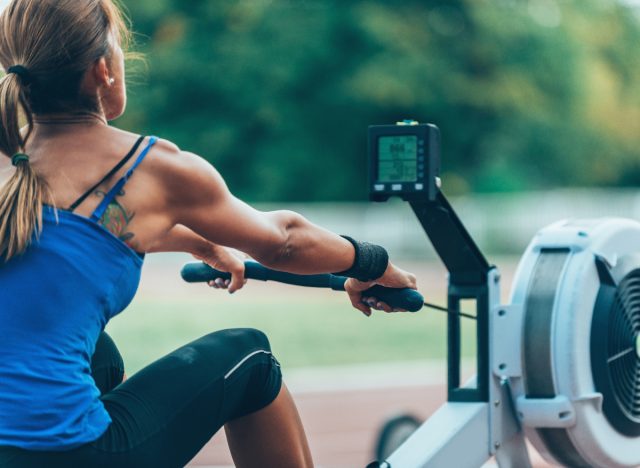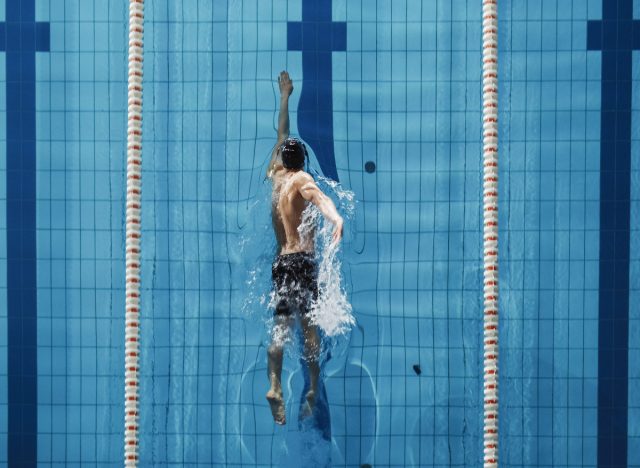HIIT vs Steady-State Cardio for Weight Loss—Here's What To Choose

If you've looked into exercising for weight loss and burning fat, you've likely come across the terms "HIIT" and "LISS" training. HIIT stands for high-intensity interval training and LISS translates to low-intensity steady-state. Both methods of training are ultra-effective components of a weight loss plan, but which exercise style burns the most fat? Well, you'll have to keep reading, because today, we're diving into HIIT vs steady-state cardio for weight loss.
As far as fat loss is concerned, the most important things to focus on are maintaining a daily caloric deficit, performing some form of resistance training, and incorporating aerobic exercise. Anything that burns calories—including both HIIT and LISS workouts—can increase your daily deficit. Both forms of training will contribute to your fat loss and are great habits to stay healthy.
When it comes down to HIIT vs steady-state cardio for weight loss, you should choose the method you are most likely to adhere to throughout your weight loss journey. Read on to learn the specifics about each, and next up, don't miss The 6 Best Exercises for Strong and Toned Arms in 2022, Trainer Says.
The benefits of doing HIIT for weight loss

HIIT involves performing intervals of high-intensity exercise alternated with low-intensity exercise for sets of 10 to 60 seconds. You need to really push yourself on the high-intensity phase for the duration of each interval to make it count. Perform your HIIT using traditional aerobic equipment, or opt for strength exercises in a circuit format.
HIIT workouts typically last 15 to 20 minutes, making them incredibly efficient from a time perspective. Plus, HIIT workouts are so intense that you burn more calories throughout the day after your workout—science says so!
The downside of HIIT is that it's uncomfortable to exercise at that intensity level for certain people, so if the difficulty outweighs the time saved for you, then HIIT might not be the best choice. However, if you can handle the intensity and want to save time, HIIT is a great form of exercise when it comes to torching excess fat.
Related: The 5 Best Exercises To Lose Belly Fat and Slow Aging, Says Fitness Expert
The benefits of doing LISS for weight loss

Low-intensity steady-state training involves exercising at a lower intensity using exercises such as hiking, running, or swimming. LISS workouts generally last a minimum of 20 minutes, but 45 minutes is a good target to aim for the total duration.
When it comes to calorie burn, LISS torches away calories at a lower rate than HIIT and has less of the afterburn effect. However, the duration of steady-state workouts is longer than HIIT workouts, resulting in more total calories burned during the session itself.
From a practical standpoint, LISS is better if you have more time to work out and want to avoid the intensity of HIIT training while still reaping all the wonderful benefits of exercise and helping to hit your daily caloric deficit.
Related: What Science Says About the Exercise Habits That Slow Aging
Here's a solid HIIT workout for fat loss

Perform the following for a total of 5 cycles using your preferred aerobic equipment for a HIIT workout:
· 30 seconds hard at 70+ percent intensity
· 30 seconds easy at 10 to 20 percent intensity
After you complete 5 cycles, rest for a full minute after the end of the easy interval, then perform up to 4 more rounds.
… And here's a stellar LISS workout for fat loss

For a LISS workout, choose your preferred method of aerobic exercise, such as power walking, jogging, or swimming, where you can get to the 40 to 70 percent intensity range. If you are new to aerobic exercise, start with 20 minutes three times per week, and add another 10 minutes per week. Aim for a total of 150 minutes per week, spread out however is the most convenient for you.








